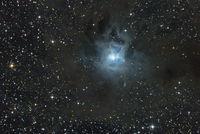
Lead Image © Sternenhimmel, fotolia.com
OpenNebula – Open source data center virtualization
Reaching for the Stars
OpenNebula [1] separates existing cloud solutions into two application categories – infrastructure provisioning and data center virtualization [2] – and places itself in the latter group. This classification allows for clear positioning compared with other solutions – a topic I will return to later in this article.
What Is OpenNebula?
OpenNebula relies on various established subsystems to provide resources in the areas of virtualization, networking, and storage. This demonstrates a significant difference from alternative solutions like OpenStack and Eucalyptus, both of which favor their own concepts – as exemplified in storage by OpenStack via Swift.
In OpenNebula, these subsystems (Figure 1) are linked by a central daemon (oned). In combination with a user and role concept, the components are provided via a command-line interface and the web interface. This approach makes host and VM operations independent of the subsystem and allows for transparent control of Xen, KVM, and VMware. Mixed operations with these hypervisors are also possible – OpenNebula hides the available components in each case using a uniform interface. This transparent connection of different components shows the strength of OpenNebula: its high level of integration.
Buy ADMIN Magazine
Subscribe to our ADMIN Newsletters
Subscribe to our Linux Newsletters
Find Linux and Open Source Jobs
Most Popular
Support Our Work
ADMIN content is made possible with support from readers like you. Please consider contributing when you've found an article to be beneficial.






